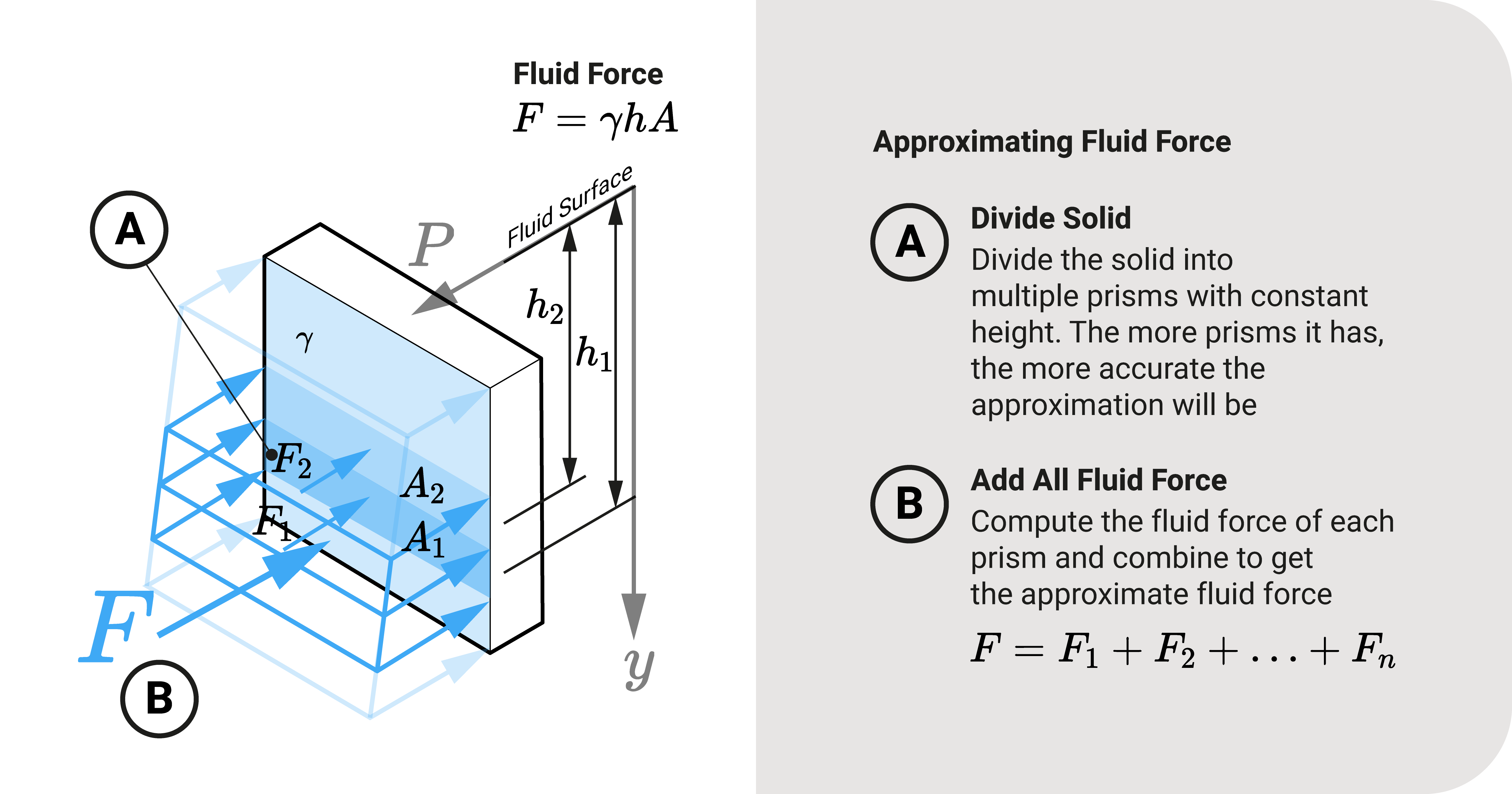In this post, we'll explore how to find the total force acting on an object in a fluid experiencing varying forces.
Varying Fluid Force
Let's say we have a submerged plate oriented vertically in a fluid with uniform unit weight. In addition, let's also consider its pressure solid. From this graph, pressure increases from the top of the object to its bottom. It implies that pressure varies depending on the depth.
To find the total force \(F\) acting on the body, it is \(F=\gamma h A\); however, because pressure varies, the fluid force on the bottom of the plate is not the same as that of the top.
Approximation

To compute the total force, we can approximate it. We divide the pressure solid into multiple solid sections. This would result to submerged cross-sectional areas \(A_1\), \(A_2\), \(A_n\). From this, we establish the heights \(h_1\), \(h_2\), \(h_n\) of these areas from a reference. We can compute the fluid force for each division as follows:
\(F_n = \gamma h_n A_n\)
The total force is then the sum of these individual fluid forces. If we want a better approximation, we increase the number of solid sections.






